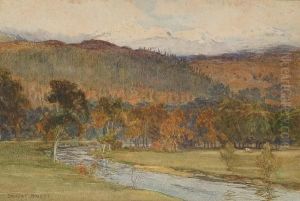Ernest Edward Briggs Paintings
Ernest Edward Briggs was an American abstract expressionist painter, a movement that gained prominence in the art world in the post-World War II era, particularly in the 1940s and 1950s. Born in San Diego, California, Briggs showed an early interest in art, which led him to pursue his education in the field. His journey into the world of art took a significant turn when he moved to New York City, the epicenter of the Abstract Expressionism movement. There, he became part of a vibrant community of artists who were exploring new ways of expression through their artwork, breaking away from traditional forms and techniques.
Briggs's work is characterized by its emotional intensity, bold use of color, and dynamic brushwork, elements that are hallmark of the abstract expressionist style. He was known for his ability to convey deep emotional and existential themes through abstract forms and a rich palette. Throughout the 1950s and 1960s, his work gained recognition and was exhibited alongside other prominent artists of the era. Despite the shift in art trends over the decades, Briggs remained committed to his abstract expressionist roots, continually evolving his style and technique.
Throughout his career, Briggs faced the challenges of changing art markets and varying degrees of recognition. However, his dedication to his craft and his unique voice in the abstract expressionist movement have secured his place in American art history. After his death in 1984, Briggs's work continued to be celebrated and studied for its contribution to the abstract expressionist movement and its influence on subsequent generations of artists. His paintings are held in various prestigious collections and museums, serving as a testament to his lasting impact on the art world.





